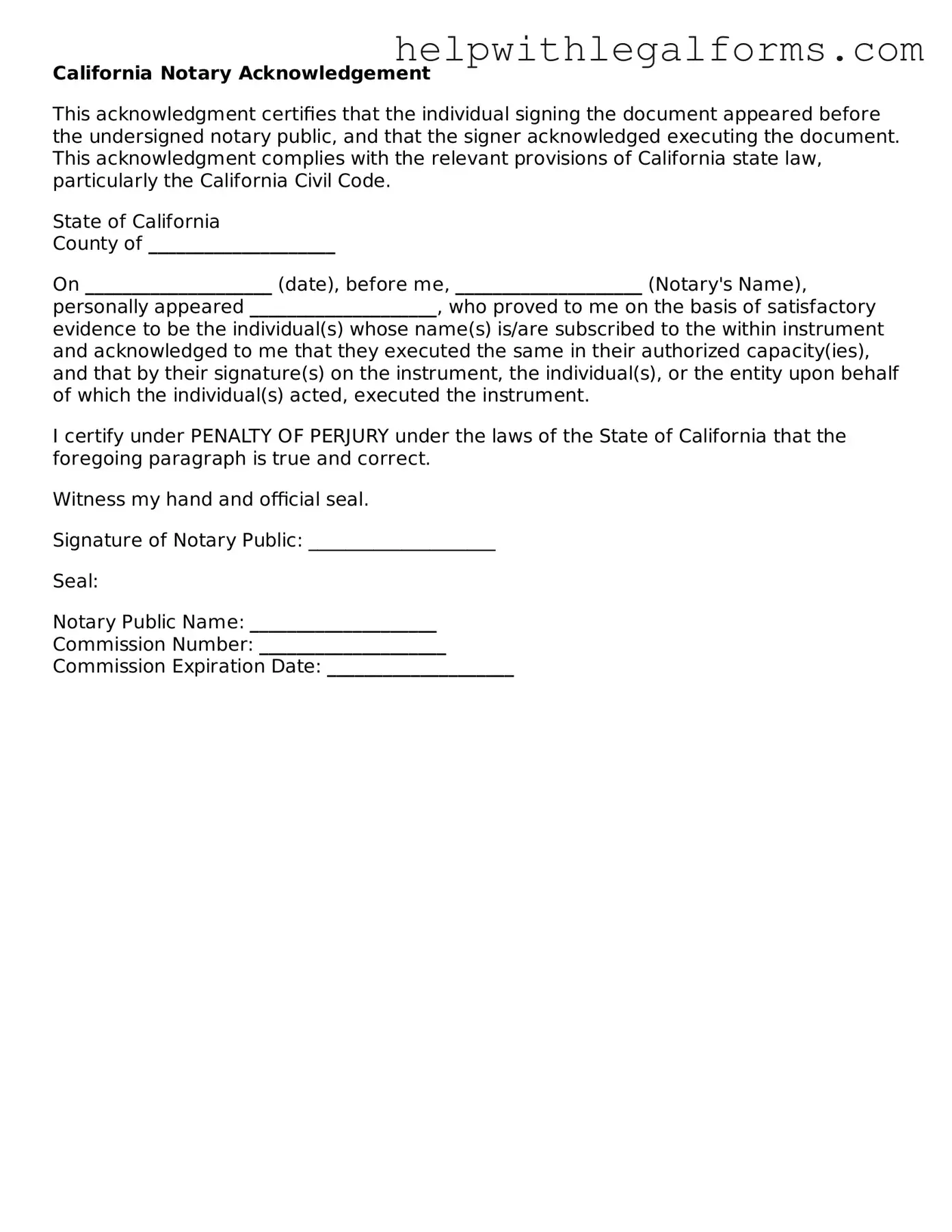What is a California Notary Acknowledgment form?
A California Notary Acknowledgment form is a document completed by a notary public that certifies the signer of a document has personally appeared before the notary, confirmed their identity, and acknowledged they have signed the document willingly and for the purposes contained within it. This form serves as an official verification of a signer's identity and willingness.
When is a California Notary Acknowledgment form required?
This form is often required when legal documents need to be authenticated for transactions or legal procedures, including property deeds, power of attorney, or any documents submitted to a court of law. It ensures the document is legally binding by verifying the signer's identity and consent.
Who can perform a notarization in California?
In California, a notarization can only be performed by a person who is commissioned as a notary public by the California Secretary of State. The person must meet all the necessary qualifications and have undergone the required training, including passing a background check and a state-administered exam.
What identification is needed to get a document notarized in California?
To have a document notarized in California, the person whose signature is being notarized must present valid photo identification to the notary public. This could include a state-issued driver's license, a passport, or other government-issued identification that contains the individual's photograph, signature, and some identifying information.
Does a California Notary Acknowledgment form need to be filed with the state?
No, a California Notary Acknowledgment form does not need to be filed with the state. Once completed, it becomes part of the notarized document. However, the notary public is required to keep a record of the notarial act in their official journal.
Can a California Notary Acknowledgment form be completed electronically?
Yes, as per the latest guidelines, notary publics in California can perform electronic notarizations, including completing the Notary Acknowledgment form electronically. This process requires using a digital platform approved for such purposes, ensuring compliance with all relevant laws and standards for electronic notarization.
